* * * *
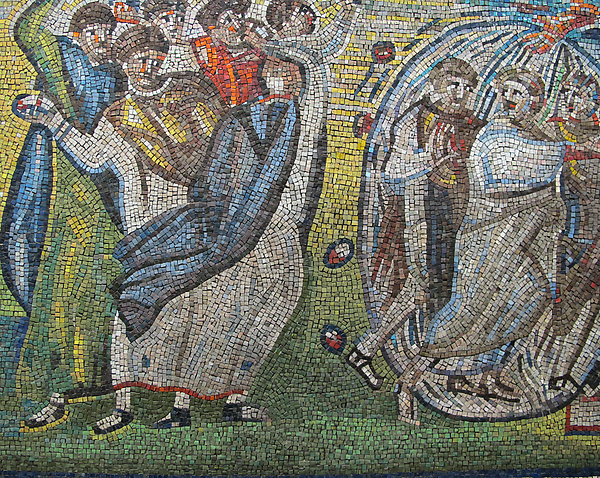
One time when Moses almost got stoned – to death – along with Joshua and Caleb…
* * * *
Here’s an update on some recent Dally Office Readings.
The Old Testament reading for last Sunday – January 10, 2015 – was Genesis 1:1, up to Chapter 2:3. That story of the creation of the world begins – and ends – like this:
In the beginning God created the heavens and the earth. Now the earth was formless and empty, darkness was over the surface of the deep, and the Spirit of God was hovering over the waters… And on the seventh day God finished the work that he had done, and he rested on the seventh day from all the work that he had done. So God blessed the seventh day and hallowed it, because on it God rested from all the work that he had done in creation.
In turn, that account causes a lot of non-believers to scoff.
They scoff because the person who wrote it – presumably Moses – didn’t put forth a “carefully constructed treatise, reflecting a well-thought-out plan.” They scoff because Moses said the earth was created in seven days.
 And they scoff because Moses didn’t tell his audience that the earth was some billions of years old by that time. Or that there’d been “dinosaurs” roaming the earth millions of years before the Israelites became slaves in Egypt.
And they scoff because Moses didn’t tell his audience that the earth was some billions of years old by that time. Or that there’d been “dinosaurs” roaming the earth millions of years before the Israelites became slaves in Egypt.
Or that that the terra firma on which they stood actually revolved around that “big bright round thing in the sky.” (And not the other way around.)
What those scoffers fail to realize is that if Moses had mentioned any such things, he would have been stoned to death. (At yet another time and for yet another reason; one such incident is shown in the image at the top of the page.)
In other words, what those scoffers fail to realize is that at the time he was writing, Moses was addressing an audience of the largely “unwashed.” That is, illiterate men and women who had been trained since birth to be “mindless, docile slaves.”
So again, if Moses had mentioned any of the things above, he would have certainly been “stoned,” there in the Wilderness. (And not in a good way.) And by the way, Jesus noted a similar problem in John 3:12, where He told His disciples, “If you don’t believe me when I tell you about things on earth, how will you believe me when I tell you about things in heaven?“
Which is another way of saying that our puny little human minds are simply incapable of fully understanding God and all that “He” – anthropomorphism – is. And this was especially true of the main audience Moses addressed when he wrote the First Five Books of the Bible.
Suppose Moses had mentioned dinosaurs in his writings. Or how “we” revolve around that “big bright thing in the sky.” The result would have been similar to what nearly happened in the Old Testament reading for January 8 – 2016 – Exodus 17:1-7. In Exodus 17:4, “Moses cried out to the LORD, ‘What should I do with these people? They are ready to stone me!'”
That was the incident at Mount Horeb, where God responded to the Israelites’ whining about being thirsty. (By telling Moses to “strike the rock,” out of which came a stream of water.)
And that’s not to mention Numbers 14:10, “The whole assembly talked about stoning them.” That was also part of “the people rebelling” – while Wandering in the Wilderness – told in Numbers 14. In this case, the Bible noted “the people” were ready to stone not just Moses and Aaron, but also Joshua and Caleb. (Who tried to defend them.) In turn, God told Moses He was ready to “strike them down with a plague and destroy them,” that is, the Whiners. But fortunately, Moses was able to persuade God not to do that. (See also On arguing with God.)
So here’s what the Pulpit Commentary said about that incident:
This is the first which we hear of stoning as a punishment. It is naturally one of the easiest modes of wreaking popular vengeance on an obnoxious individual, and was known to the Greeks as early as the time of the Persian War…
A couple of notes: The reference to the Persian War (or “Wars”) means the ancient Greeks were also familiar with stoning-as-punishment, apparently somewhere around 470 B.C. And that wreaking “popular vengeance on an obnoxious individual” has also been around awhile.
(Not making any suggestions about our current political situation…)
But getting back to the problem Moses faced, writing the Pentateuch…
In plain words, “Moses was forced by circumstance ‘to use language and concepts that his ‘relatively-pea-brained contemporary audience’ could understand.'” (See On the readings for June 15 – Part I.) And to the extent he was writing for a future audience, he probably expected that future audience to understand those circumstances, and take them into account.
But getting back to the point, “our puny little human minds are simply incapable of fully understanding God:” On that note the DORs for January 11 included Isaiah 55:8 and 9:
“For my thoughts are not your thoughts, neither are your ways my ways,” declares the Lord. “As the heavens are higher than the earth, so are my ways higher than your ways and my thoughts than your thoughts.”
Gill’s Exposition of the Bible said that this passage denotes “the heavenliness of the ways and thoughts of God, the eternity and unsearchableness of them, and their excellency and preciousness; as well as the very great distance between [God’s] ways and thoughts and men’s [ways and thoughts] which this is designed to illustrate.”
All of which is another way of saying that “our puny little human minds are simply incapable of fully understanding God.” Or as one professor put it – on our inability to understand God:
We are simply not up to the task, not wired for such an overload. We are no more prepared to comprehend [God] than – to make use of a memorable example – cats are prepared to study calculus. It’s just not in our nature. (E.A.)
So to sum up, if Moses had mentioned dinosaurs – or the earth being billions of years old, or our earth revolving around that “big bright round thing in the sky – in the first five books of the Bible, “the people” would have thought he was crazy, or worse. They probably would have stoned him to death – as a heretic – or burnt him at some nearby convenient stake.
At the very least, Moses would have faced some sort of Inquisition – like Galileo did, some 2,800 years after Moses. (For holding a view ostensibly “contrary to Scripture,” that the earth revolved around the sun, and as shown below.) Which leads to one final comment:
It was never “contrary to Scripture” that the earth revolved around the sun. It was only contrary to a narrow-minded, pigheaded, too-literal reading of the Scripture…
* * * *

* * * *
The upper image is courtesy of Stoning of Moses, Joshua and Caleb | Byzantine | The Metroplitan Museum of Art. (It’s a mosaic from the 5th century.) See also Stoning – Wikipedia, the free encyclopedia, which includes another painting of the incident. The caption to that painting, under Punishment of the Rebels: “The Punishment of Korah and the Stoning of Moses and Aaron (1480–1482), by Sandro Botticelli, Sistine Chapel, Rome.” See also Heresy – Wikipedia.
The stoning article said this of a “Korah” painting of the incident:
The painting … tells of a rebellion by the Hebrews against Moses and Aaron. On the right the rebels attempt to stone Moses after becoming disenchanted by their trials on their emigration from Egypt. Joshua has placed himself between the rebels and Moses, protecting him from the stoning…
Which raises anew the question: “What would those backward, ignorant, sons-of-the-desert have done to Moses if he’d told them the truth about that ‘big bright round thing in the sky?’”
* * * *
Re: The Creation Story. See also The Creation Story – Bible Story Summary and/or Creation Stories (from around the World) – University of Georgia.
The “dinosaurs” image is courtesy of Dinosaur – Wikipedia. The caption: “Artist’s impression of six dromaeosaurid theropods: from left to right Microraptor, Dromaeosaurus,Austroraptor, Velociraptor, Utahraptor, and Deinonychus.”
The “Moses striking the rock” image is courtesy of BLB Image Gallery :: Moses Striking the Rock.
The “wandering in the wilderness” map is courtesy of davidblum61 … /2012/01/09/bible-maps-2.
Re: The DORs for January 11. The four-volume book version of the Daily Office has readings specified for a specific day in January – January 7 through 12 – beginning with the “Epiphany and following,” up to the “Eve of 1 Epiphany.” However, in the online Satucket website, the reading for January 11 is listed as for the Monday after the First Sunday of Epiphany. The net effect is to require the assiduous Daily Office reader to have two sets of readings for the days in January from the 7th to the 12th.
Re: the “cats-calculus” quote. See On “Job the not patient” – REDUX, citing Professor Timothy Shutt of Kenyon College, author of Hebrews, Greeks and Romans: Foundations of Western Civilization.
The lower image – “Cristiano Banti‘s 1857 painting Galileo facing the Roman Inquisition” – is courtesy of the article, Heresy – Wikipedia:
Galileo Galilei was brought before the Inquisition for heresy, but abjured his views and was sentenced to house arrest, under which he spent the rest of his life. Galileo was found “vehemently suspect of heresy,” namely of having held the opinions that the Sun lies motionless at the centre of the universe, that the Earth is not at its centre and moves, and that one may hold and defend an opinion as probable after it has been declared contrary to Holy Scripture. He was required to “abjure, curse and detest” those opinions. (E.A.)
* * * *
And here’s more on the ostensible “Bible contradictions,” alluded to above. See the notes for The Bible readings for September 27. They cited the For or against link at the Secular Web site. (Owned and operated by Internet Infidels, Inc.) The site included this: “The Bible is riddled with repetitions and contradictions, things that the Bible bangers would be quick to point out in anything that they want to criticize.” The website also took the Bible to task for not creating a “carefully constructed treatise, reflecting a well-thought-out plan.”
I addressed such criticisms in posts like The readings for June 15 – Part I. I pointed out that Moses – for example – in writing the first five books of the Bible, was limited by “his audience’s ability to comprehend.” The audience he “wrote” for was almost wholly illiterate – not to mention ignorant by present-day standards – and had been trained since birth only to be mindless, docile slaves. Thus Moses was forced by circumstance “to use language and concepts that his ‘relatively-pea-brained contemporary audience’ could understand.”
In further words, if Moses had written the “carefully constructed treatise” suggested by the “Infidels,” he almost certainly would be burned at the stake or stoned to death. (Or both.) See also Reflections on Volume 3 – Part II, which includes “The Stoning of Moses and Aaron.”
Then too, those “Bible bangers” are just the type of people inclined to give a “narrow-minded, pigheaded, too-literal reading of the Scripture.”
* * * *
A final note: The DOR Gospel reading for Saturday, January 16 – the day this was posted – was John 2: 13-22. That included verses 19-22, where Jesus was asked about his “authority:”
Jesus answered them, “Destroy this temple, and I will raise it again in three days.” They replied, “It has taken forty-six years to build this temple, and you are going to raise it in three days?” But the temple he had spoken of was his body.
Which leads to another reason not to read the Bible too literally: Jesus often spoke in metaphors, not to mention “parables.” See for example, On three suitors (a parable)
* * * *

 About the same time I did
About the same time I did  “Twelfth Night (The King Drinks)…”
“Twelfth Night (The King Drinks)…”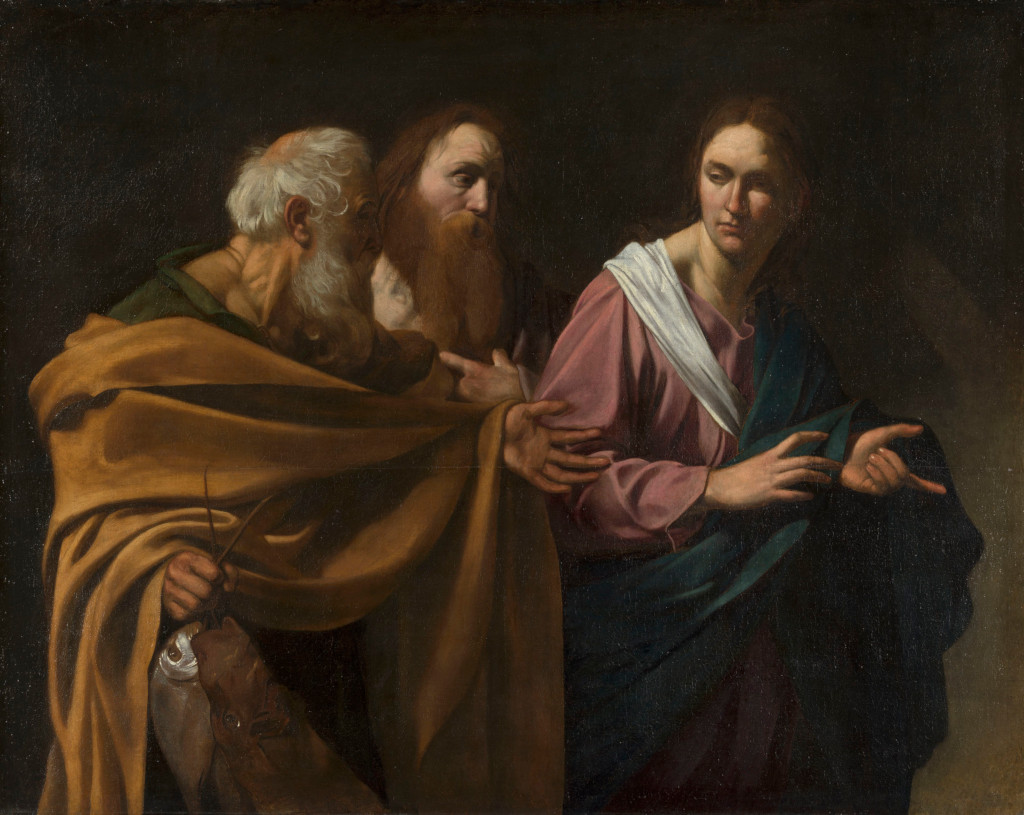
 And which brings to mind
And which brings to mind 

 The “Swamp Fox” shares a meal with his sworn enemy…
The “Swamp Fox” shares a meal with his sworn enemy… 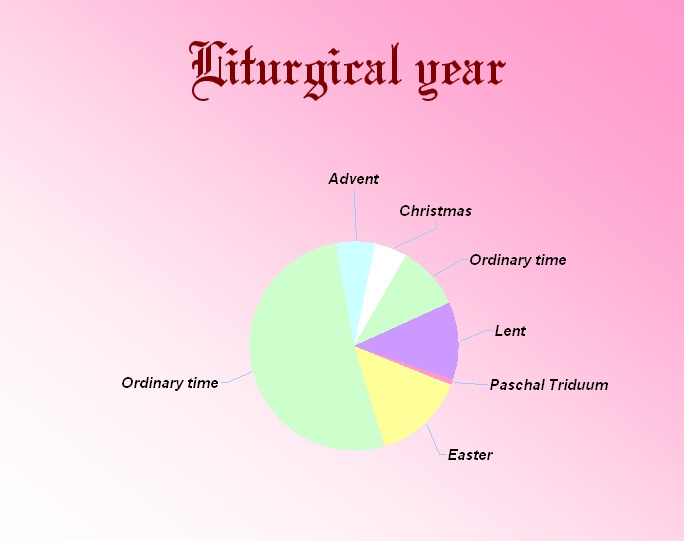 Pentecost Sunday
Pentecost Sunday Readings from the
Readings from the 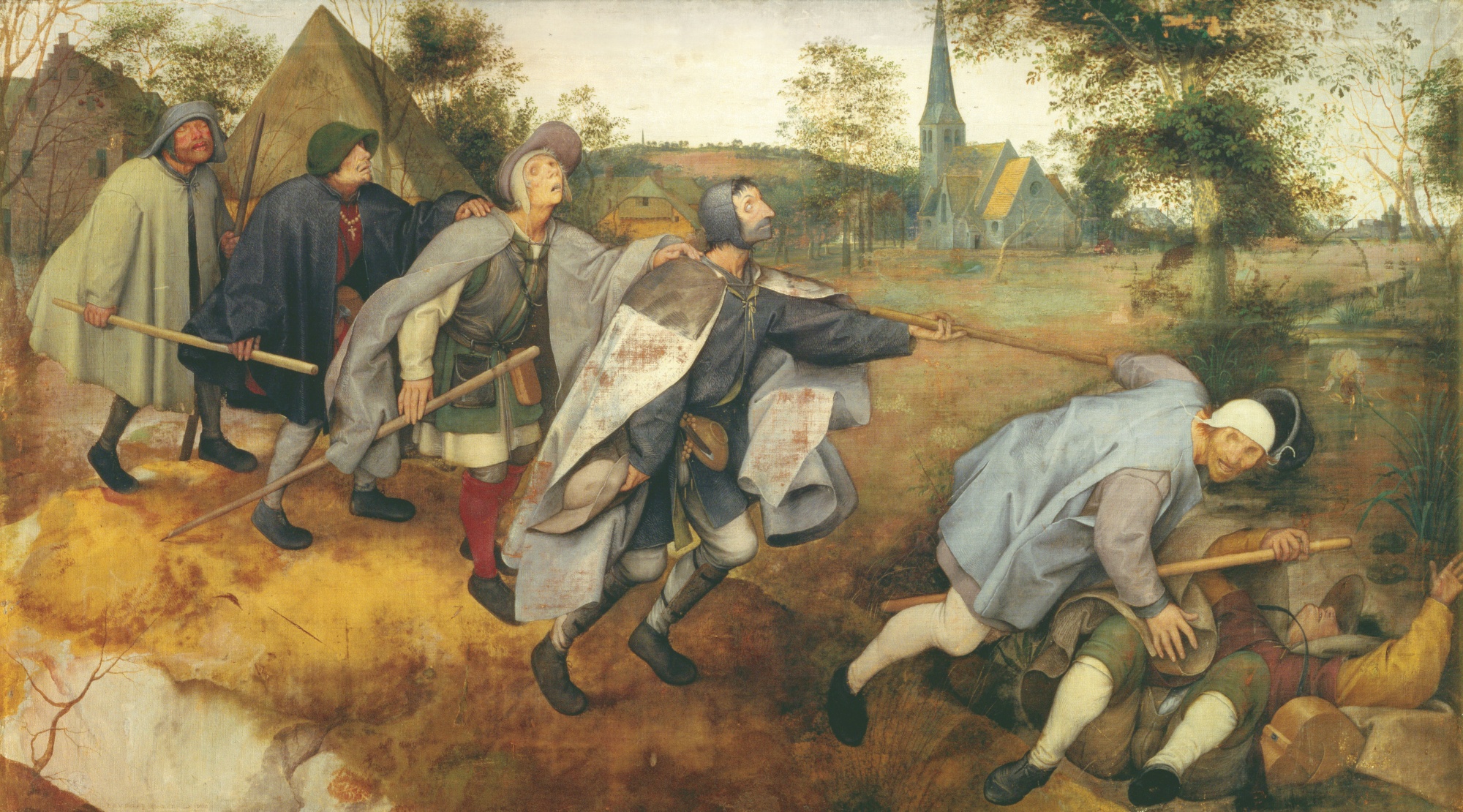
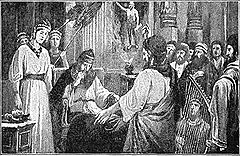 See
See  Ezra’s job was to “teach the laws of God,” to both returning exiles and those who’d been
Ezra’s job was to “teach the laws of God,” to both returning exiles and those who’d been 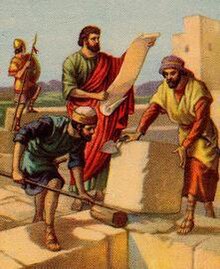 See also
See also  That reading from the next day – Tuesday, November 10 – could serve as a warning to those today who choose to become “fat, filled, and delighted.” (See
That reading from the next day – Tuesday, November 10 – could serve as a warning to those today who choose to become “fat, filled, and delighted.” (See  This
This 

 Earlier this week I planned to do a time-to-read-it post on the Bible readings for Sunday November 8. Then I came across the New Testament
Earlier this week I planned to do a time-to-read-it post on the Bible readings for Sunday November 8. Then I came across the New Testament  And finally I came across
And finally I came across 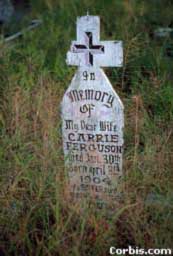 But first a brief word about November 2, “All Souls’ Day.” It’s formally known as the
But first a brief word about November 2, “All Souls’ Day.” It’s formally known as the  As to Psalm 127, see
As to Psalm 127, see  And finally, the Gospel for the day is Mark 12:38-44. The second part of that reading tells the
And finally, the Gospel for the day is Mark 12:38-44. The second part of that reading tells the 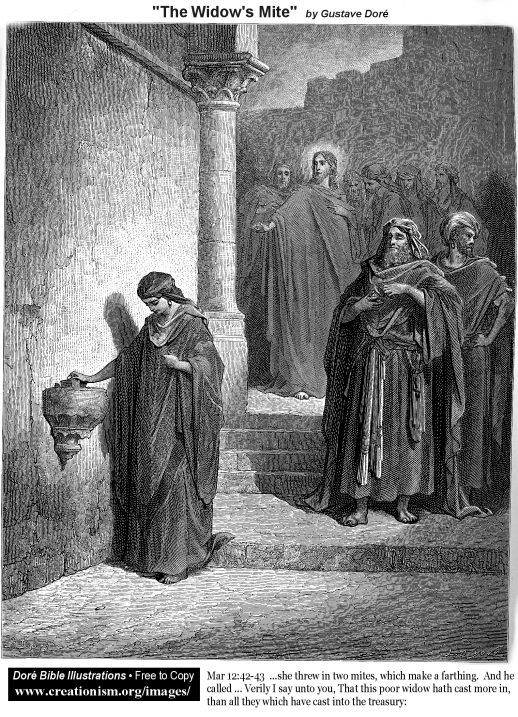
,-The.jpg)
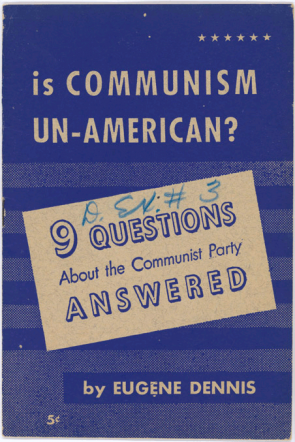 But most people don’t know that calling someone a “Samaritan” in the time of Jesus was pretty much like calling him a “
But most people don’t know that calling someone a “Samaritan” in the time of Jesus was pretty much like calling him a “ The story goes back to the time of
The story goes back to the time of 
 See
See  And the usual fate of heretics was to be massacred, as shown at left.
And the usual fate of heretics was to be massacred, as shown at left.
 The readings for August 15 – the day that my brother and I launched our canoe from
The readings for August 15 – the day that my brother and I launched our canoe from  The Gospel for August 17 featured Jesus
The Gospel for August 17 featured Jesus  The Gospel for August 27 was
The Gospel for August 27 was 


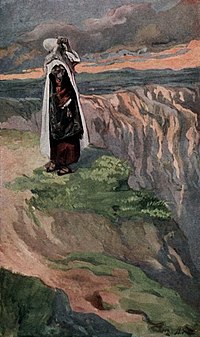 Deuteronomy 29:2-15 is part of “concluding discourse” of Moses, on renewing the covenant between God and the Hebrews. See
Deuteronomy 29:2-15 is part of “concluding discourse” of Moses, on renewing the covenant between God and the Hebrews. See  The Gospel – Luke 18:15-30 – began with people bringing children for Jesus to bless. The disciples tried to stop it, but:
The Gospel – Luke 18:15-30 – began with people bringing children for Jesus to bless. The disciples tried to stop it, but: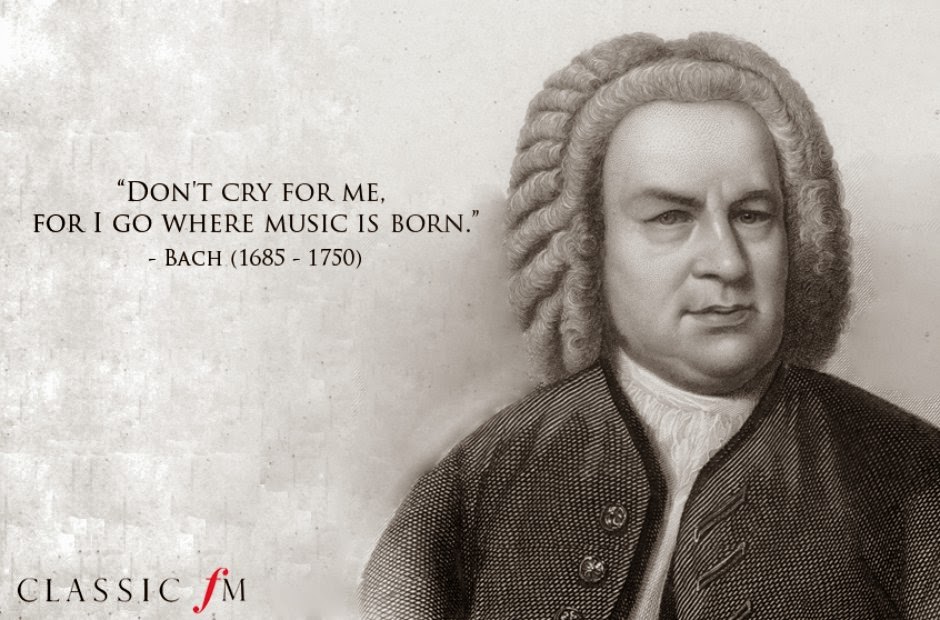 Personally I think it’s the “rote answer.”
Personally I think it’s the “rote answer.” In other words, this June 6th calls for us to remember the sacrifices of those brave members of the armed services 71 years ago, as part of the Allied invasion of Normandy.
In other words, this June 6th calls for us to remember the sacrifices of those brave members of the armed services 71 years ago, as part of the Allied invasion of Normandy.